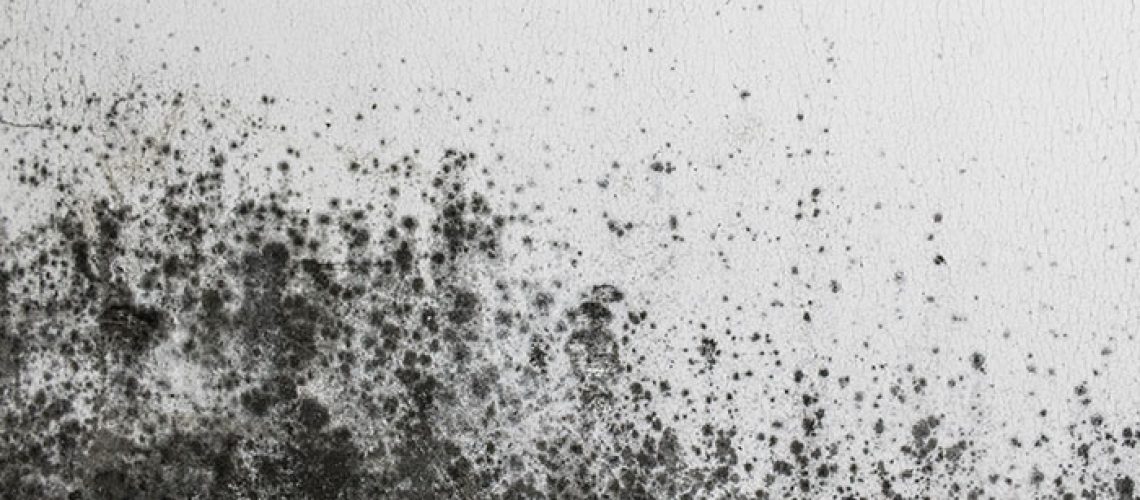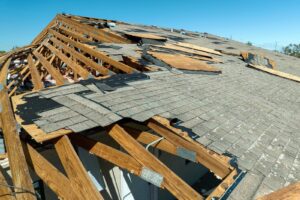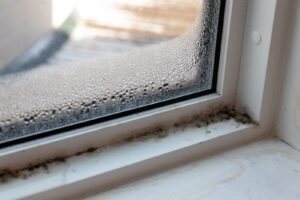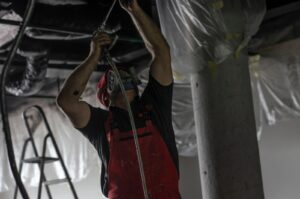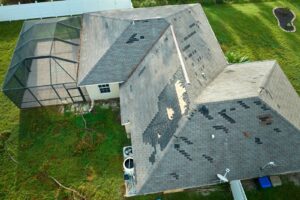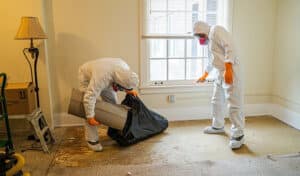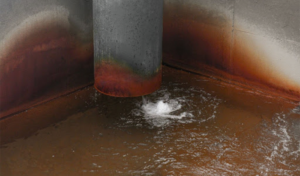Mold can be found almost anywhere, even in dry, arid climates. In fact, mold is an important organism that plays a critical role in decomposition and breaking down organic matter, but it can be dangerous if mold begins to grow indoors.
Even though you can find mold anywhere, that does not mean you should ignore it. If you find mold inside your home, it should always be professionally removed as quickly and thoroughly as possible to protect the health and safety of your household.
To understand more about how mold spreads, it is important to learn more about how and why mold exists, starting with mold spores.
Spores
Mold begins as microscopic spores that travel through the air. Mold reproduces asexually, which means that a single parent organism can produce new spores. When mold is disrupted or disturbed, the spores are released into the air or onto whatever caused the disturbance.
Think of mold spores as similar to seeds that are released during specific periods of growth of the existing mold. The spores travel through the air, whether by wind or humidity until they land on a surface.
If the surface does not have the conditions for the spores to grow, the spores become dormant or inactive but can be activated in the right conditions. When those spores find a space that allows for growth, they begin to replicate.
Mold thrives in warm, damp environments, so mold spores will quickly claim areas with those characteristics as their home. Within 24 hours, spores can replicate and begin to form a colony that can spread rapidly to many other surfaces.
If the new colony is disrupted or disturbed without being properly removed, more mold spores will be released and spread through the air until they find a home to grow.
Transmission
We’ve already touched on how mold spores can travel through the air, but there are some other ways mold spores can spread you should address in this article.
When a spore lands on a surface, it will remain on that surface until it is disturbed again or begins to grow. This includes more than just a flat surface like a window sill.
If you walk through an area with mold growing and releasing spores, there is a good chance that those spores will adhere to the surface of your clothing, especially your shoes — this means that wherever you go, so do the mold spores you picked up.
Additionally, if your pet encounters mold spores, they can transmit the spores that get caught in their fur, hair, or paws wherever they wander. Transmission like this can bring unwanted mold spores into your home or the places you visit.
Another form of transmission of mold to be aware of is the way that spores can spread through ventilation if proper filters are not in place. For instance, if mold begins to grow in an area of your basement that is damaged by water, the spores can travel through the air and vents until they land on a surface in the attic.
Now, the transmission of spores does not always lead to mold growth. Spores can remain dormant and present in the air for an indefinite period of time, and even if they do land on a surface, that surface must have certain conditions to allow the spores to remain active or become activated and start reproducing and growing.
Growth
In order to grow, mold needs a place that supplies the right food, temperature, oxygen, and water. Unfortunately, most molds are not very selective or picky, so many environments meet those conditions for mold.
Unlike plants that can produce energy via photosynthesis, fungi — mold is a fungus— feed on organic matter and don’t require sunlight. Instead, mold uses digestive enzymes to break down organic materials into simpler compounds and substances that are easier to consume and digest.
Organic matter can refer to almost any carbon-based substance, meaning there are many different substances that mold can feed off. This includes textiles made from natural fibers, food crumbs, and even wallpaper adhesives.
As far as the temperature goes, mold spores can exist in most conditions. However, the ideal temperature range for mold to grow is between 70 and 90 degrees Fahrenheit. This range can differ if the humidity levels are high since mold thrives off excess moisture.
Mold can continue to grow and reproduce as long as the conditions remain the same and provide the right food, temperature, oxygen, and water. In fact, even if you remove mold completely, if the conditions don’t change, there is a good chance the mold will return or begin to grow somewhere else in the area.
Removal
If you discover mold growing anywhere indoors, it is important to remove it immediately and take the necessary precautions to prevent the mold from returning. While we can’t completely escape mold exposure, preventing as much exposure as possible is vital for the structure of your home and, more importantly, the health of you and your loved ones.
Individuals with asthma or other respiratory illnesses are most likely to experience negative symptoms associated with mold exposure. However, the Asthma and Allergy Foundation of America explains that any person can experience an allergic reaction to mold.
Removing mold can be difficult and usually requires assistance from professionals with the necessary equipment and experience to safely eliminate the mold and return your home to its original condition.
Restoremasters Can Help
If you are looking for a professional team of experts to help remove mold in your home, look no further than Restoremasters. Our technicians can eliminate mold safely and address the problem at the source to prevent mold from returning.
Restoremasters is a licensed and insured company that guarantees to get you back in your home or business as quickly and safely as possible. Contact us today to get started on your restoration project with a team you can trust!

